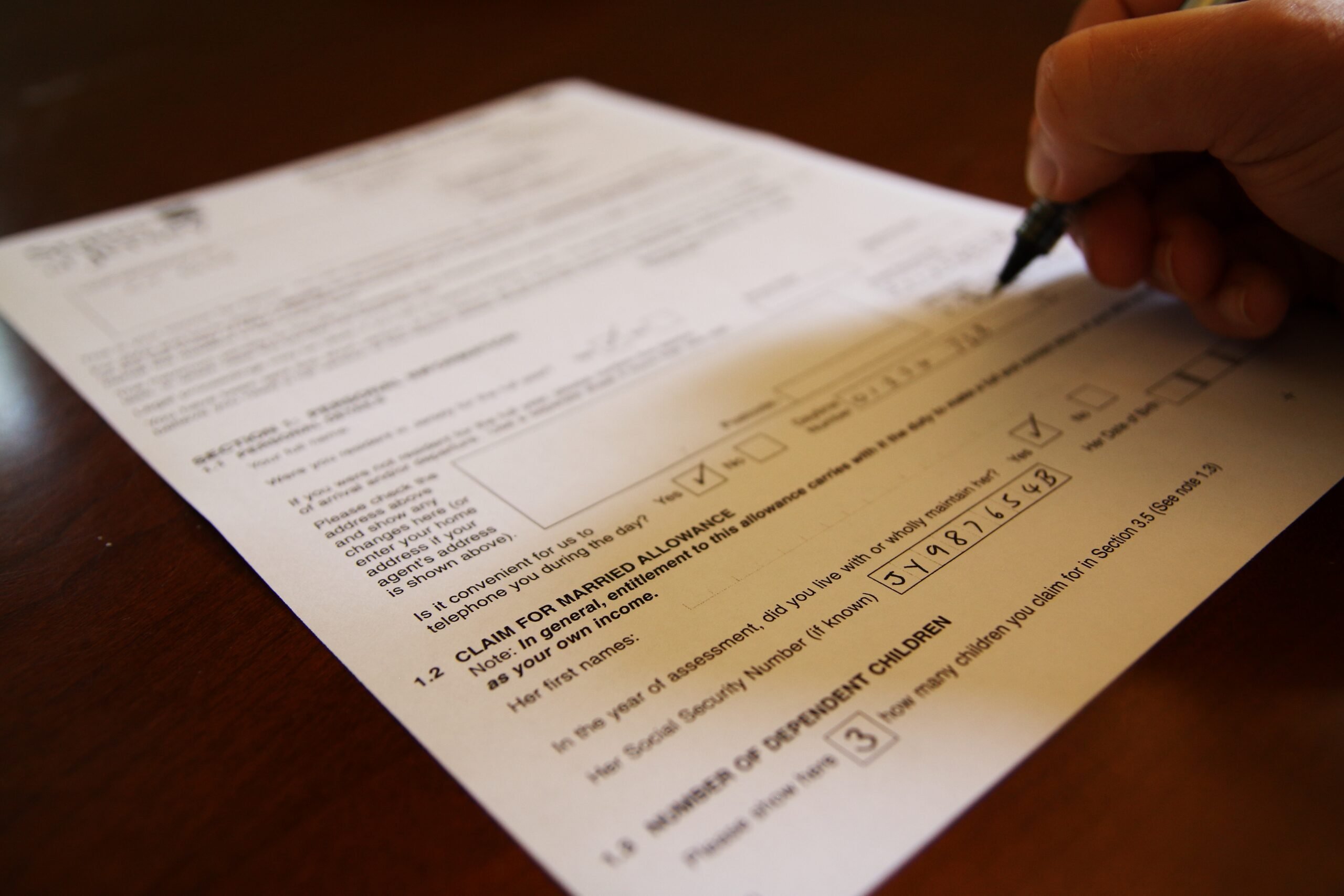Complete Guide to the Acknowledgement of Service Divorce Process
21/01/2025

Starting the Divorce Process in Australia
Divorce is often a challenging and emotional journey that marks the end of a significant chapter in life. The emotional and logistical demands of divorce is stressful, so it’s important to understand the legal steps involved. In Queensland and throughout Australia, one key aspect of this process is the Acknowledgement of Service Divorce.
The Acknowledgement of Service Divorce document is more than just a formality. It confirms the Respondent has received the divorce papers. By providing the court with proof of service, this document ensures fairness and transparency by guaranteeing that both parties are fully informed of the proceedings and can participate or respond.

Understanding this process is essential to keep the case moving forward and avoid potential delays. For Respondents, it offers reassurance that they are being treated fairly under the law and in compliance with the Family Law Act 1975, which helps protect the rights of both parties during what can often feel like a chaotic time.
The Role of the Acknowledgement of Service Divorce
The Acknowledgement of Service Divorce is integral to the broader divorce process in Queensland. Without this acknowledgement, the court cannot confirm that the Respondent is aware of the divorce application, which then leads to significant delays that may require further legal actions such as applying for substituted service.
Substituted service may involve alternative methods like using email or social media, but these require court approval and additional documentation, increasing the complexity of the divorce proceedings. Moreover, a lack of proper acknowledgement might hinder the Petitioner’s ability to finalise the divorce within a reasonable timeframe.
Making sure that the Acknowledgement of Service Divorce is completed facilitates a smoother process and upholds the principles of transparency and fairness, as both parties are given a clear understanding of the proceedings.
How to Properly Serve Divorce Papers
To meet the requirements set by the court, follow the correct method of service in preparing your divorce filing, starting with personal service:
Use personal service
This involves delivering the documents directly to the Respondent. The Applicant cannot serve the divorce papers personally. Instead, the delivery person must be over 18 years of age and not a party to the divorce.
This ensures impartiality and compliance with legal requirements. Personal service guarantees that the documents are received in person and can be confirmed by the Respondent’s signature on the Acknowledgement of Service form.
Use the service of a professional process server
A professional process server can deliver the documents on your behalf. This option is often used when direct personal service is not feasible or when the Respondent is difficult to locate. Process servers are experienced in ensuring that the documents are delivered in accordance with legal standards, providing the necessary proof of service to the court.
While lawyers can also serve the divorce papers, this is not common for ethical and practical reasons. For instance, lawyers have a duty to their clients, so they must avoid being in situations that can cause conflicts of interest. Furthermore, lawyers typically focus on legal representation, so resources are better allocated for the case, and not for processing serving duties.
File documents online
When preparing the Acknowledgement of Service divorce for electronic filing, the Applicant should adhere to specific technical guidelines to ensure a smooth submission process. The Applicant can submit the document as a PDF file by accessing the Commonwealth Courts Portal. However, to avoid confusion, engaging a legal professional is highly recommended.
Lawyers are well-versed in the electronic filing procedures and can ensure that all documents are prepared and submitted correctly, minimising the risk of errors or delays. They can assist with preparing the Acknowledgement of Service form in the correct format, navigating the Commonwealth Courts Portal. Lawyers also ensure proper document upload, so you meet all electronic filing deadlines and requirements. They can also address any technical issues that may arise during the filing process.
By utilising the expertise of a lawyer, Applicants can significantly streamline the electronic filing process and increase the likelihood of a successful and timely submission.
Ensure proof of delivery
Proof of delivery is essential to confirm the documents were served. This is typically achieved through the Respondent’s signature on the Acknowledgement of Service Divorce form. In cases where the Respondent refuses to sign, the server may need to provide an Affidavit of Service, detailing the circumstances of the delivery.
Completing the Acknowledgement of Service Divorce Form
Filling out the Acknowledgement of Service Divorce form correctly is vital to prevent issues later in the divorce process. Here are the key steps:
Filling out the Acknowledgement of Service Divorce form
Start by carefully filling out the form, ensuring all details are correct. This includes verifying the full names of both parties, providing current and accurate addresses, and including the court case number exactly as it appears on your divorce paperwork. Accuracy at this stage is essential to avoid rejection or the need to resubmit. If you have any questions or concerns, go over the process with your lawyer.

Witnessing and signing requirements in Queensland
The Respondent’s signature must be witnessed by an authorised person, such as a Justice of the Peace, solicitor, or notary public. The authorised witness ensures that the form is signed voluntarily and that the identity of the Respondent is verified. To ensure compliance, it is recommended to refer to the Family Court’s guide, which includes an example of a correctly completed form.
Submitting the Acknowledgement of Service Divorce form to the Court
Once the form is signed and witnessed, it must be submitted to the Federal Circuit and Family Court of Australia as part of the divorce proceedings. This step formalises the Respondent’s acknowledgement of being served with divorce documents.
It is also important to note that the Affidavit of Service is filed alongside the acknowledgement form to attest to its validity.
The affidavit acts as proof that the service was carried out in accordance with legal requirements. It attests to the validity of the acknowledgement. Together, these documents ensure that the divorce process continues without unnecessary legal hurdles.
Common Questions About Acknowledgement of Service Divorce
What happens after the Acknowledgement of Service Divorce is filed?
Once the Acknowledgement of Service Divorce is filed with the court, it officially notifies the court that the Respondent has been served with the divorce papers. This initiates the formal legal proceedings and allows the court to set a timeline for the divorce process.
What if I don’t file the Acknowledgement of Service Divorce form?
If the Respondent fails to file the Acknowledgement of Service Divorce within the specified timeframe, the court may grant the Applicant permission to proceed with the divorce without the Respondent’s formal acknowledgement.
However, the specific procedures for this situation can vary depending on the jurisdiction. Consult a lawyer for your specific situation.
Can I amend or withdraw the Acknowledgement of Service divorce form?
You can amend or withdraw the Acknowledgement of Service Divorce document in some instances. For example, if the Respondent discovers an error in the acknowledgement or if there are significant changes in circumstances. However, any such amendments or withdrawals must be made in accordance with the court’s rules and procedures.
Troubleshooting the Divorce Process
Navigating the divorce process can be stressful if the Respondent does not cooperate. In cases where the Respondent fails to respond or outright refuses to sign the Acknowledgement of Service Divorce form, you can take steps to address the situation.
Seek legal advice
The first step is to consult a family lawyer. We can evaluate your case and provide tailored guidance on the best course of action. Professional support can help you avoid unnecessary delays and ensure compliance with legal requirements.
If the Respondent is unresponsive, you may need to apply for substituted service through the court. This is particularly useful when the Respondent is deliberately avoiding receipt of the documents.
However, Courts require proof that you have made reasonable efforts to serve the documents. This might include affidavits from the process server, copies of correspondence sent to the Respondent, or records of attempted deliveries.
Consider additional legal actions
In some cases, if all methods of service fail, your solicitor may advise other legal strategies to move forward with the divorce application. These can vary depending on the complexity of your case.
Delays caused by an uncooperative Respondent can be frustrating. However, understanding your legal rights and options can help you navigate these challenges. Ensure that the process progresses smoothly and that your rights are protected by seeking professional assistance is the best way to ensure that the process progresses smoothly and that your rights are protected.
Tips for Ensuring a Smooth Divorce Process
Set reminders
Keep track of deadlines to avoid missing crucial steps. Deadlines are not just administrative markers; they are critical for ensuring your case progresses without unnecessary delays. Use tools like digital calendars or reminder apps to stay on top of key dates.
Communicate clearly
Ensure all communications with the other party are clear and professional. Clear communication helps to reduce misunderstandings and ensures that agreements or decisions are documented effectively. If tensions are high, consider written communication to maintain a record and prevent misinterpretation.
Understand legal requirements
Familiarise yourself with the specific legal requirements and processes involved. For instance, knowing the importance of proper service or the need for authorised witnessing can save you from potential pitfalls.
Engage a lawyer
Engaging a family lawyer can help navigate the process efficiently and avoid common pitfalls. A lawyer will handle the technicalities of your case and provide strategic advice tailored to your circumstances, helping you make informed decisions at every stage.
Stay organised
Keep all your divorce-related documents in one place, either physically or digitally. Staying organised allows you to quickly access information when needed. It also ensures you can provide necessary evidence or documentation to the court without delay.
If you need further assistance, feel free to contact us so we can guide you through every step of the divorce process. We understand how overwhelming this journey can be, so we are committed to providing clear, compassionate, and professional support to help you move forward.
